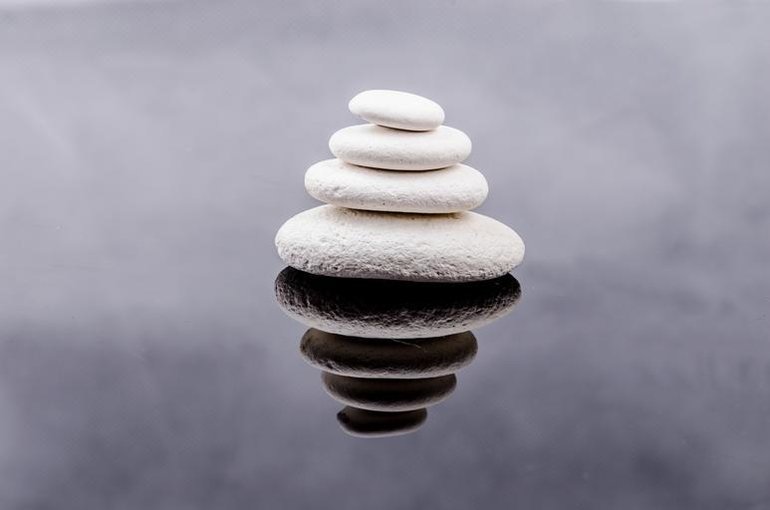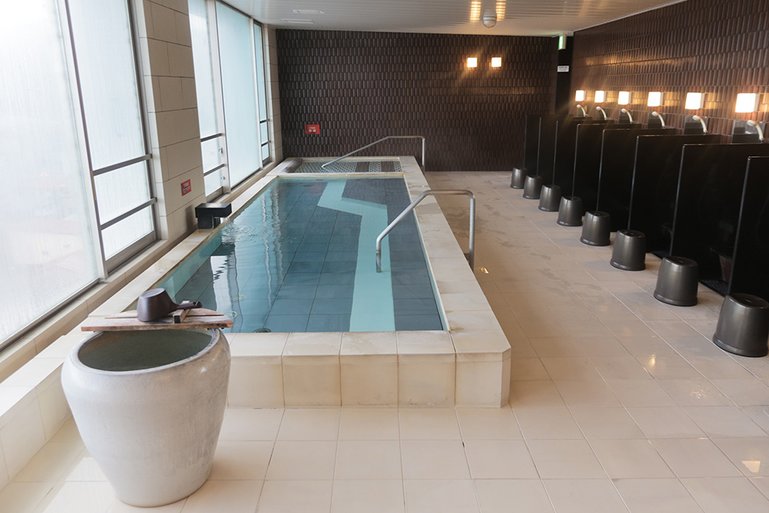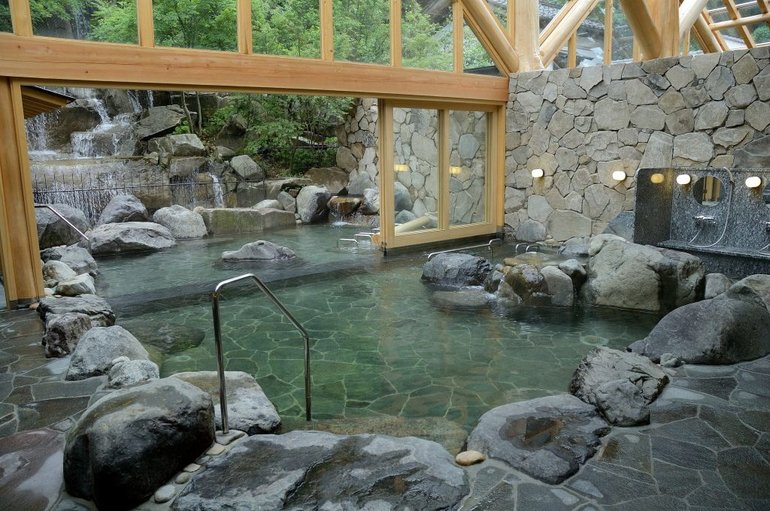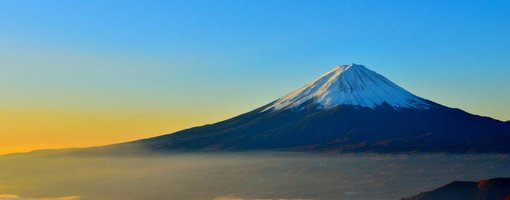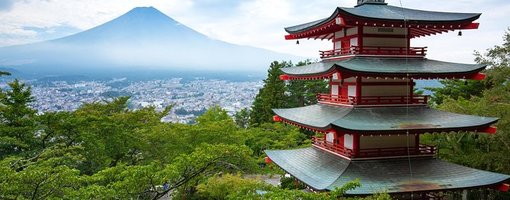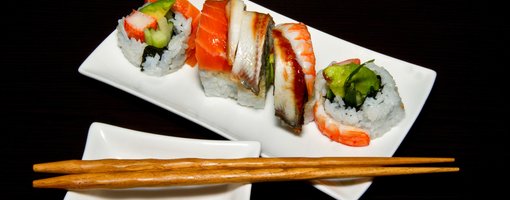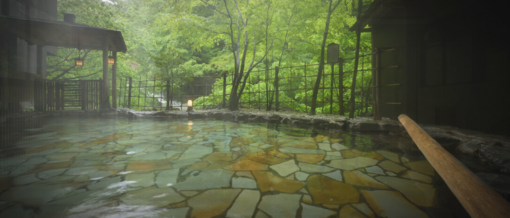Japan is a unique country. It combines innovating technology and beautiful nature and the Japanese people know how to live in harmony with it. This is reflected in everything: clothing, food, lifestyle, traditions.
One of the popular ways to have a good rest in Japan is to go to onsen. Taking a bath can bring real enjoyment and relaxation.
As might be expected, lots of tourists would like to visit an onsen and have an unforgettable experience there. It will be perfect for soaking in the bath after a long day of exploring sightseeing.
Relaxing in onsen would be an absolute treat, but where travelers should go? Onsen or Sento? What is the right choice? What is bath etiquette in Japan?
Let's figure it out together.
There are two types of baths: sento and onsen.
Sento
Sento is a Japanese communal bathhouse with the regular, not mineral, heated water in the pool.
From outside sento looks like a temple, with blue curtains hanging at the entrance . Inside it has a shoe locker, changing room and standard two or three bathtubs.
The origins of Japanese sento came from Buddhist temples in India. Later, it extended to China and came to Japan.
Baths in Japan were built inside temples, particularly for Kannushi (Shinto priests). Only in the Kamakura period 1185-1333, ordinary people were allowed to go into the bathtubs. By that time, wealthy merchants and the upper-class people built baths in their houses.
In modern days, many sento are providing a different variety of experiences. Some of them continue operating in the traditional style.
They often located in beautiful panoramic areas and may include an open-air bath.
Other bathhouses offer a wider assortment of services such as saunas, steam baths, Jacuzzi, spa, massages, mud baths and fitness centers.
Onsen
Onsen is a Japanese hot spring.
The volcanic nature of Japan provides many heated mineral-rich water springs with a temperature of 25 ° C and above. All springs have different temperatures and concentrations of minerals. For many years people have believed that soaking in hot mineral water has good health benefits such reduce stress and help clear mind, increase blood flow and the amount of oxygen, relive pain in aching joints, treat skin conditions like eczema and psoriasis.
Usually hot springs are located by forests, mountains or lakes and far away from cities.
Onsen is a popular destination for visitors and considered a must-do thing when visiting Japan.
Rules and etiquette for visiting onsen and sento:
People must follow special etiquette when they visit onsen or sento and breaking rules is considered a very bad manner. It is a public place where people get away from the city's hustle and have a quiet and relaxing time here.
Let's find out the appropriate manners and proper etiquette of using hot springs in Japan.
Shower before you bathe
All guests must take a shower, wash with soap and rinse themselves thoroughly before getting into shared large bathtub.
Shower areas are supplied with soap and shampoo or you can bring your own, wooden buckets and stool. People should sit down on one of the stools while washing, it will help to avoid splashing on the person next to you.
Remember to rinse thoroughly, because it is unacceptable to entering the onsen while still dirty or with traces of soap on the body. People must keep the water as clean as possible.
You have to be Naked
Most onsens are nude only and there is no way around this one. Clothes, swimming suits, or large towels are not allowed in the bath area. The only thing permitted inside the onsen is a small wash cloth, but you can't enter the water with it. Use your small towel to casually hide your “privets” as you move. Most Japanese men and women will be doing the same.
Some modern onsen will allow to wear a swimming suit in their mixed baths, but this is very rare.
Towels
At any onsen, guests will be provided with a small and a large towel, or they will be available for rent. You can bring a small towel to use as a wash cloth. The large towel is for drying yourself and should be left in the changing room along with your clothes. The small towel can be taken in the bathing area, but you can't dip it into common bath water.
Most people usually put on a small cloth on their heads or leave towels on the side of the bath when enjoying the bath.
Hair & head
If you have long hair, always tie up and make sure that it doesn't go into the bath water. It will prevent oil and grooming products from spoiling the water and also will keep the hair out of the baths drains. Plus nobody wants to be sitting around other people's hairballs. So bring a hair band, tie them up and make sure it's not going under water.
Also, groom and shave yourself at home, don't do it in onsen.
As well remove jewelry because the minerals in the water may cause damage and discoloring.
Noise
Onsen is a social place. Of course, while soaking in the bath, in a soothing atmosphere, many guests want to chat with friends or family. This is allowed , but make sure to do it in a low voice. Respect others and remember that people come to onsen to relax, relieve stress and to be close to nature.
When you enter the bath, don't jump, dive or splash in it.
Tattoos
Around 2015, more than 50% of onsen operators had banned people with tattoos from using the bath. The original reason for that was to keep Yakuza members and other crime gangs out of public onsen.
However, with the growing tourism in Japan, some onsen allow guests with tattoos to enter, but a tattoo has to be covered with a plaster or bandage.
People with a larger tattoo which is difficult to cover should stay at Ryokan or look for the hotel with privet onsen.
In addition,
Do Not:
- Do not take photographs or videos
- Do not enter the changing room wet
- Do not stare on other people
- Do not speak loudly
- No swimming
- No smoking
- Avoid alcohol
Hope this information is helpful and you can enjoy the onsen by following these etiquette and manners.
Enjoy !
